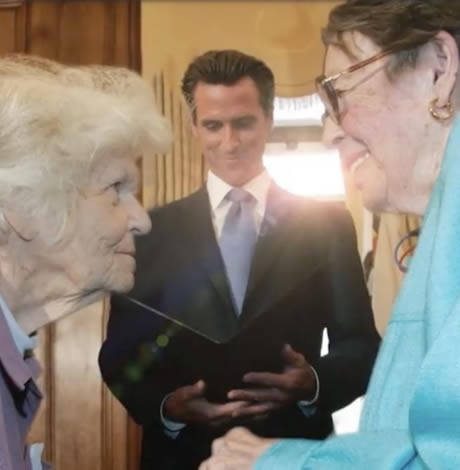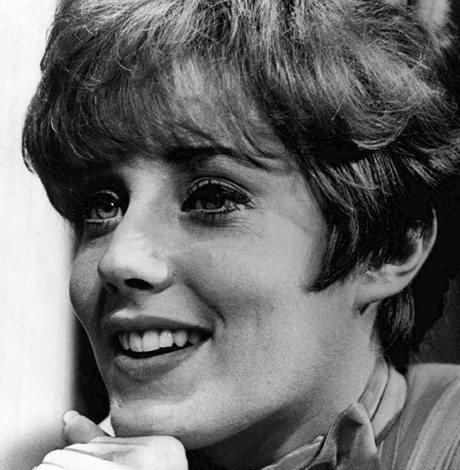Arts & Entertainment
‘In the Life’ celebrates 20 years
Groundbreaking TV series receives $1 million gift to mark anniversary
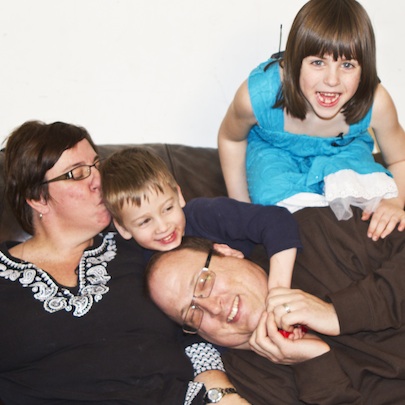

Maria and Brian Singer of Laurel, Md., and their children Lucas and Jackie, one of the families featured in ‘Becoming Me.’ (Photo courtesy of Brian and Maria Singer.)
The groundbreaking television series “In the Life” received an impressive gift for its 20th anniversary celebration — a $1 million donation from board co-chair and New York philanthropist Henry van Ameringen. This timely award gives the organization a chance to celebrate its milestone while planning for the next 20 years.
The media-shy Ameringen writes movingly about the importance of “In the Life” in a blog entry for the Huffington Post. The 82-year-old activist remembers growing up in a time when “the absence of images reflecting real gay life made it easy for people to assume we were everything bad that was said about us.” This was exacerbated when the AIDS epidemic struck the gay community in the 1980s and Ameringen, like many other LGBT activists, became politicized.
“Staying on the sidelines was impossible,” he writes. “The government was doing absolutely nothing to halt the spread of this disease nor help those who were suffering. AIDS was seen as a ‘gay disease,’ and with so few positive portrayals of gays in the media, and far fewer gay people being out at the time, most Americans believed all the stereotypes they had heard about us.”
However, the premiere of “In the Life” in 1992 contributed to the change in the media and political landscape. Ameringen notes, “The simple fact that there was a television program, airing on public television stations around the country, that represented LGBT people in such a genuine and accurate manner was stunning.” Veteran media expert and activist Cathy Renna says, “‘In the Life’ has become the ‘60 Minutes’ of LGBT journalism” and credits the show for creating a large and diverse audience for LGBT stories.
Michelle Kristel, executive director of In the Life Media, says that quality and content have been the key to the program’s longevity.
“In the early days,” she says, “we led from a place of novelty and uniqueness. When we were first broadcast in 1992, you just didn’t have out, proud gay and lesbian people on television. We were pioneers. But what has sustained us is the quality of our content and the fact that we are telling stories about real people and the critical issues facing our community.”

Philanthropist Henry van Ameringen gave $1 million to ‘In the Life,’ which has been described as the ’60 Minutes’ of LGBT news. (Photo courtesy Renna Communications)
The celebration of the show’s anniversary is already underway. The 20th season kicked off with a red carpet gala and an October 2011 episode that looked back at the history of the show. Kristel explains that “In the Life” began as a variety show hosted by lesbian comedian Kate Clinton, but that over time it evolved into a behind-the-desk news show with in-the-field reporting before assuming the short-form documentary format it has today. Over time, the award-winning show has also developed a robust online presence with web exclusives that supplement its television programming.
Kristel says the staff had a blast putting together the retrospective show. “It’s always fun for us to look at the old tapes. We had a lot of fun putting it together and taking in the depth and breadth of all that we’ve done over the years.” The anniversary celebration will culminate in the annual June Pride Brunch where supporters can “eat, drink and be merry” while watching New York’s Pride Parade from the windows of “In the Life’s” studios on Fifth Avenue in Manhattan.
When asked about the importance of the show, Kristel points out that the impact of the series goes beyond its television and online audiences. For example, this month’s episode, “Becoming Me,” which chronicles the lives of families dealing with transgender and non-gender-conforming children, is already becoming a resource for educators, parenting groups like PFLAG and social service agencies. Kristel says, “The show is a beautiful articulation of what we do really well, which is to take an issue and tell personal stories that relate to the issue and that make it tangible for our audiences. We worked on this piece for nine months and we were able to go in-depth with the eight families we interviewed and really understand their journeys.”
Kristel also cites the impact of the show on legislators and policy-makers. The two-part episode on HIV criminalization educated viewers about a little-known fact. “Very few people,” Kristel points out, “realize that in many places you can go to prison for attempted murder for having consensual sex if you are HIV-positive.” The first part of the episode, “Legalizing Stigma,” which aired in December 2010, was shown at the first-ever congressional hearing on HIV stigmatization and led to the introduction of legislation to rescind those laws. The second part, “Perpetuating Stigma,” which aired in February 2011, was shown at this year’s United Nations AIDS conference in Oslo and was referenced as a resource in the Oslo Declaration.
In addition, the celebrated web exclusive “Injustice at Every Turn” brought to life a report on transgender discrimination that was produced by the National Center for Transgender Equality and the National Gay and Lesbian Task Force. “The report was devastating,” Kristel said. “I read the report and I thought ‘people need to know about the profound levels of discrimination that transgender people are facing.’ But the fact of the matter is that very few people are going to read a report like that, so we produced a video that put a human face on these issues. That video was presented at the U.S. Department of Labor as a way of informing the department about discrimination in the workplace. This is one of the things we do well, to take an issue and put a human face on it and use it to move people to have a better understanding of the lives that people are living and the ways that people are impacted by social injustice and discrimination.”
Kristel is quick to point out that “In the Life” also produces some fun stories as well. A recent episode profiled the late Sam Steward, a sexual renegade, writer and pornographer. With a hearty chuckle, Kristel relates that “he started life as an English professor, but found that the life of an academic didn’t suit him particularly well. He left that to become a writer of erotica and a tattoo artist. Along the way, he documented, in some detail, his sexual escapades. He had a wooden card catalog that he called “The Stud File” with little cards and descriptions of everybody that he ever had sex with and with pertinent details about their physiques and their skills.”
Ameringen’s gift comes at a critical time for In the Life Media, allowing the organization to continue to deliver stories that document the lives of LGBT people and to explore the issues that affect them. About $100,000 of the donation will be used to match new and increased contributions. The balance will offer the organization a valuable opportunity to invest in its future.
Kristel says, “The media landscape has changed radically since we were first broadcast, not only in the way media is produced, but also the way that people consume media. What has remained constant is the power of media to shape the national dialogue. So we will be using this gift to make an assessment of the organization. We will be investing in digital initiatives that will allow us to not only improve our tools for engagement with our viewers but to give our viewers the tools to help us advance equality for LGBT people.”
“In the Life” airs locally on WETA and WMPB and programs can be seen at itlmedia.org/.

The Gay Men’s Chorus of Washington perform “The Holiday Show” at Lincoln Theatre (1215 U St., N.W.). Visit gmcw.org for tickets and showtimes.
(Washington Blade photos by Michael Key)
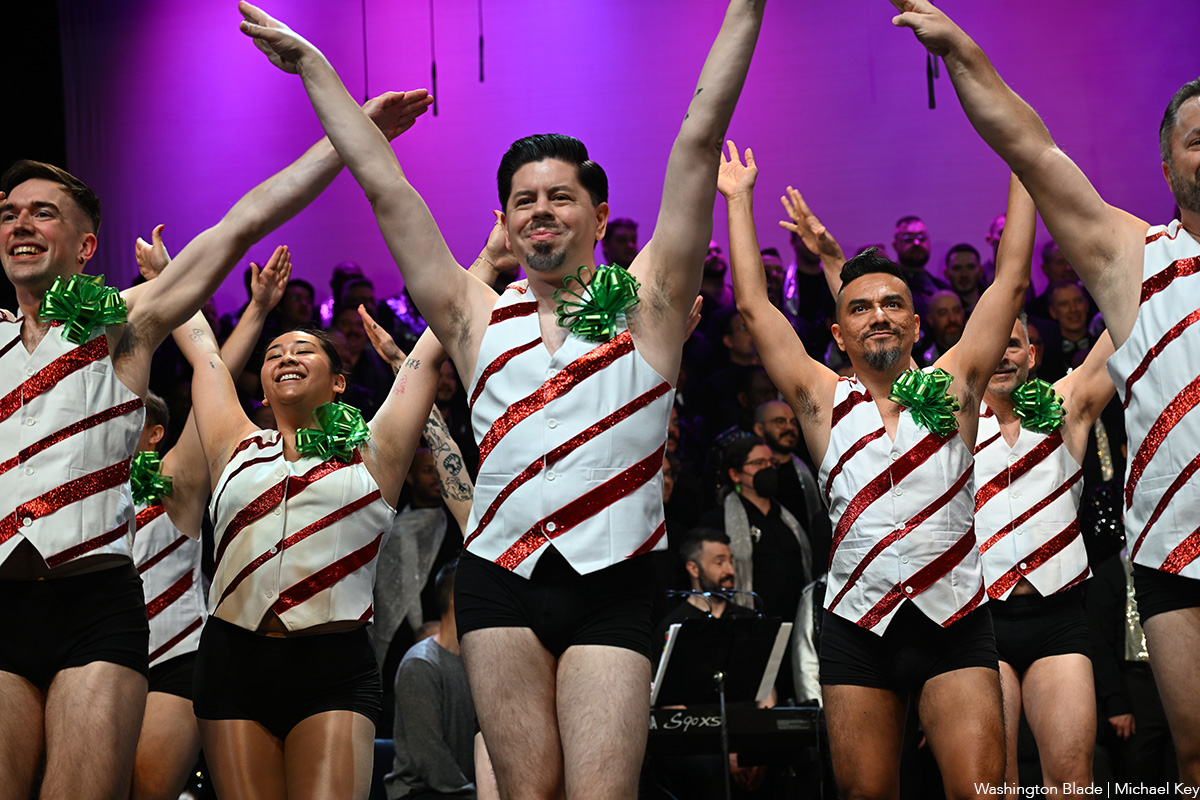


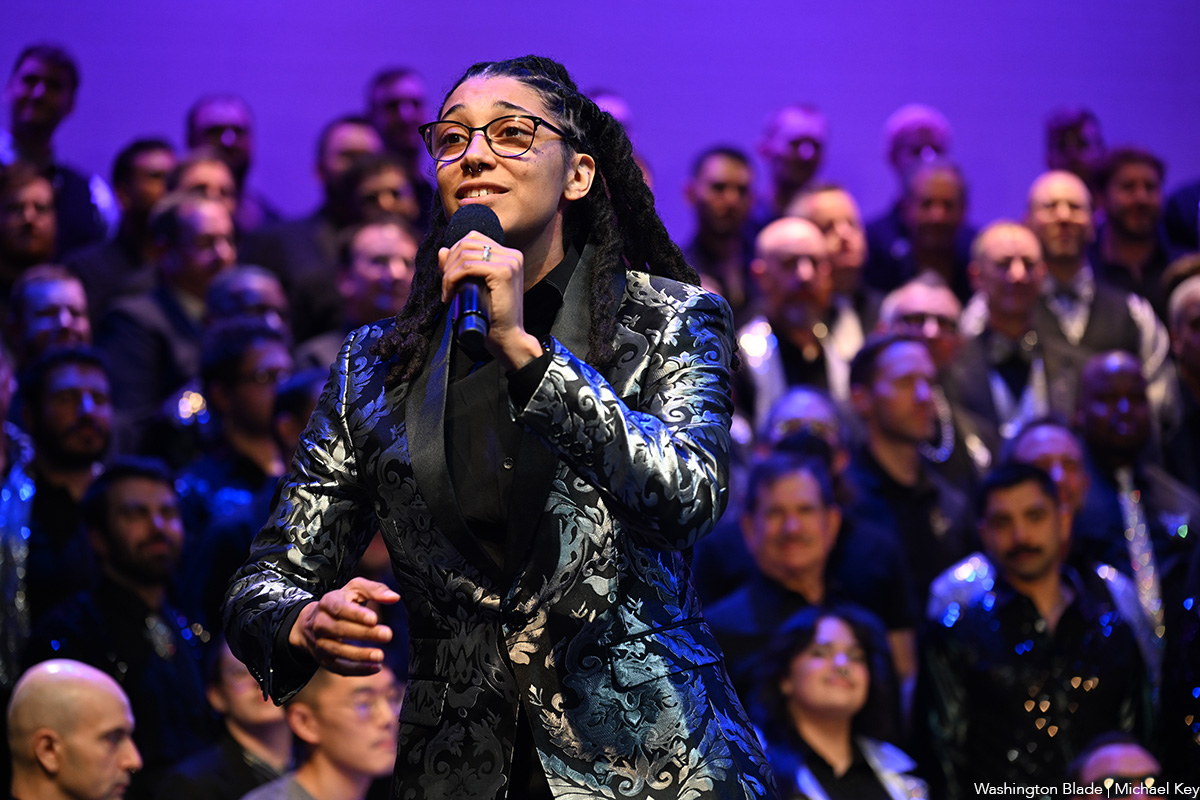
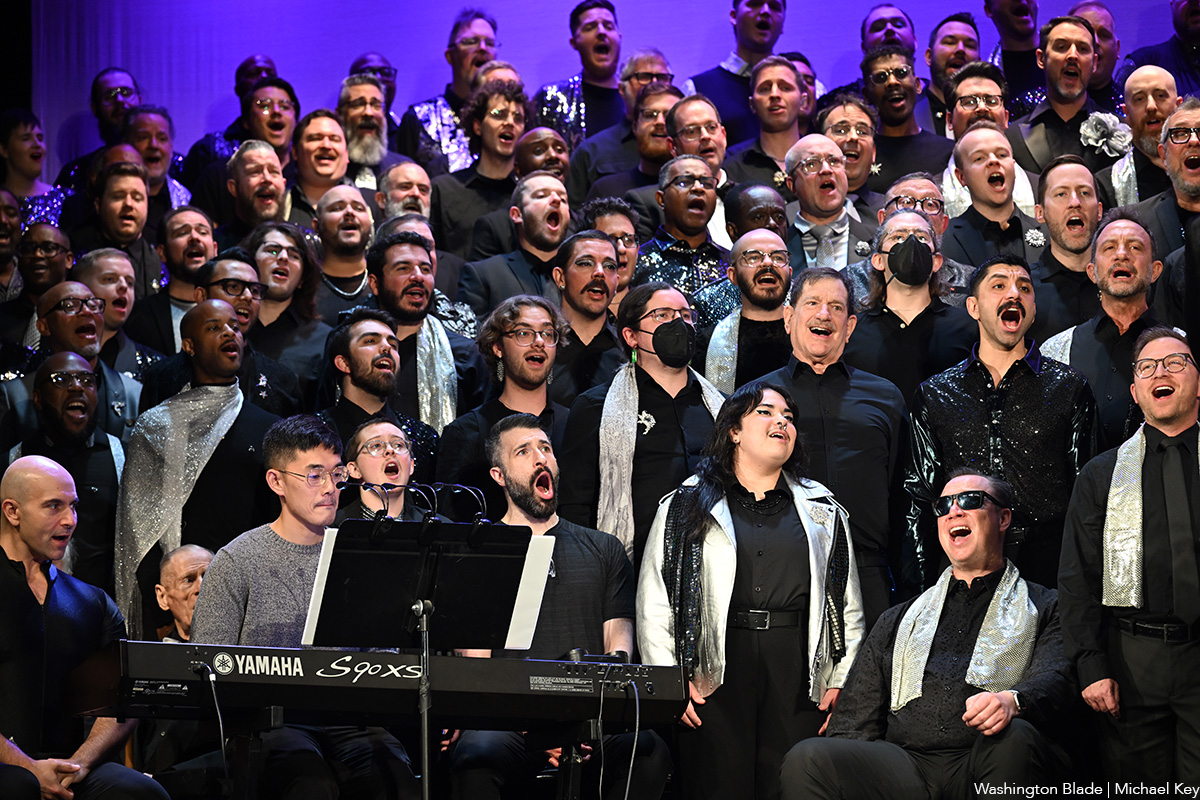






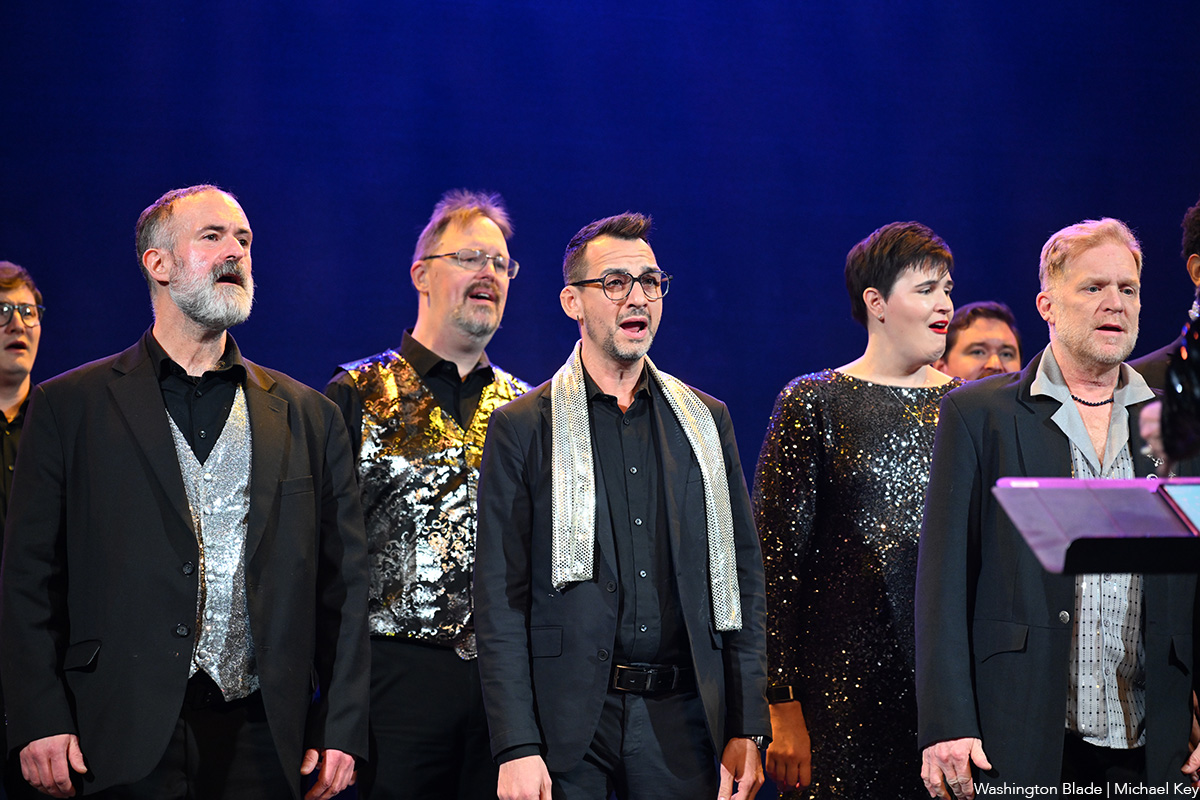
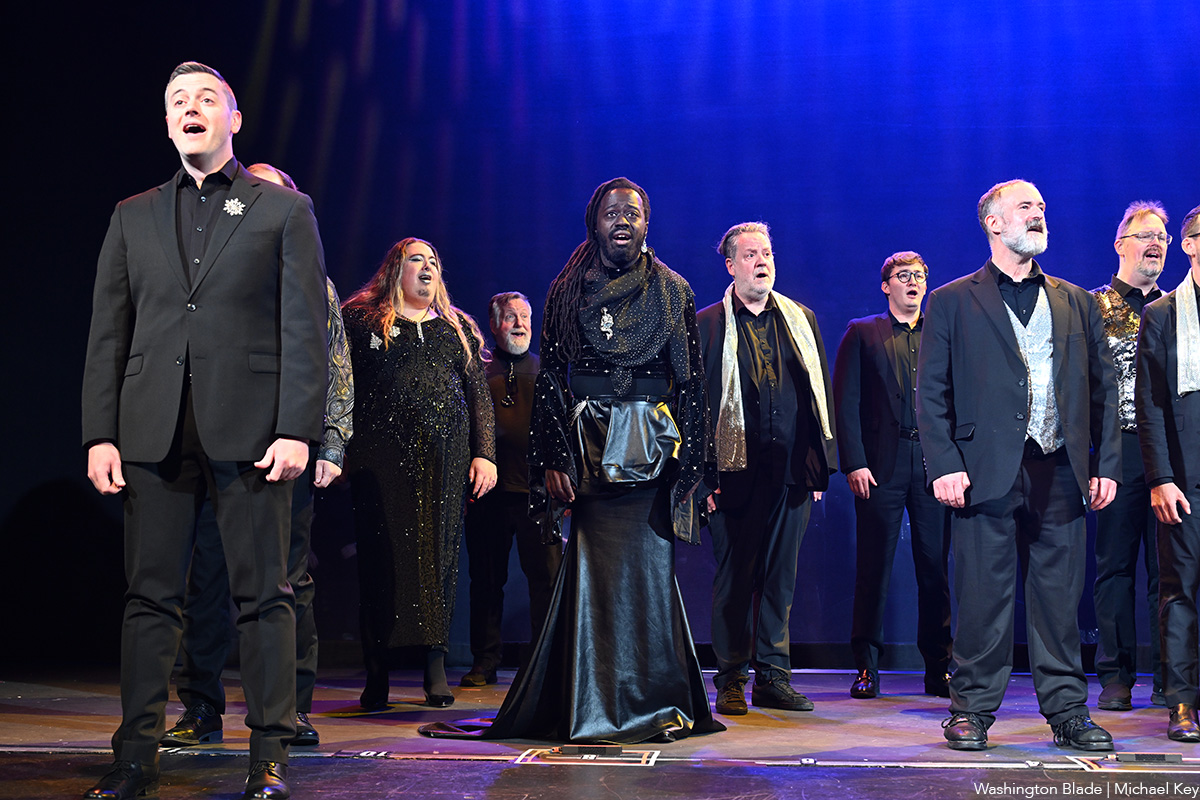
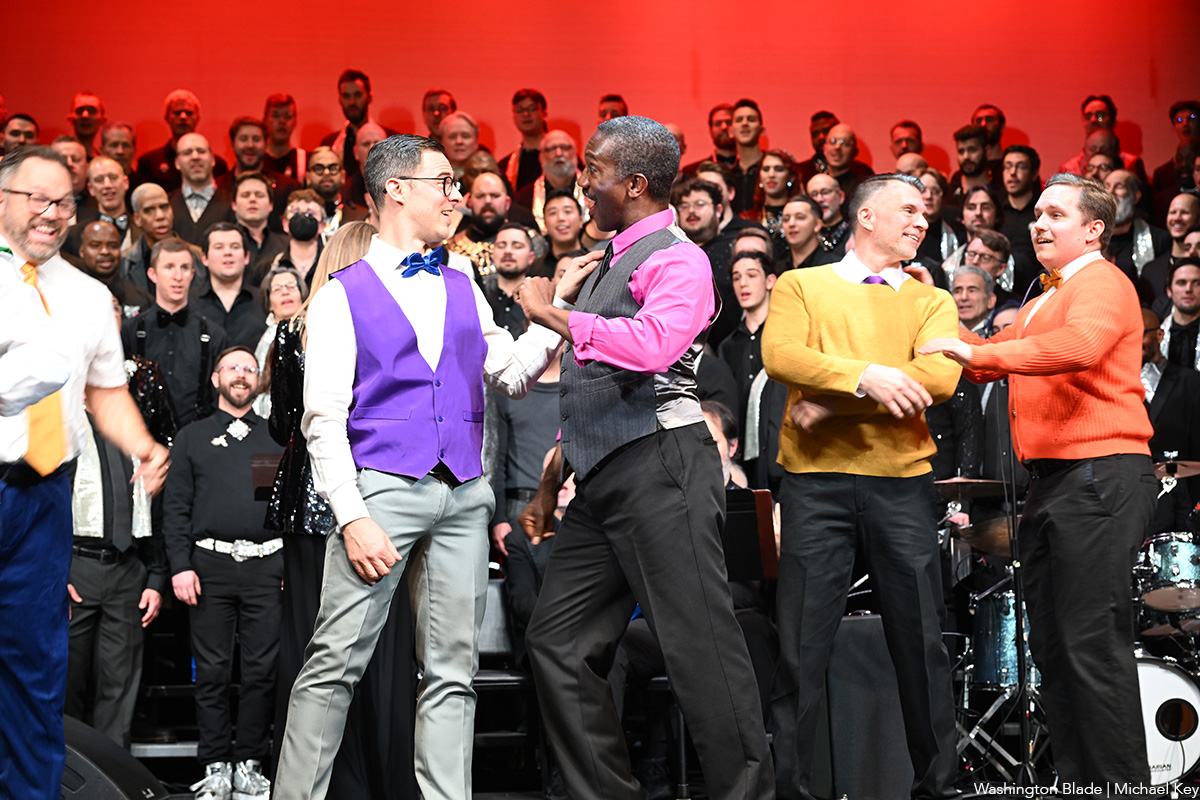
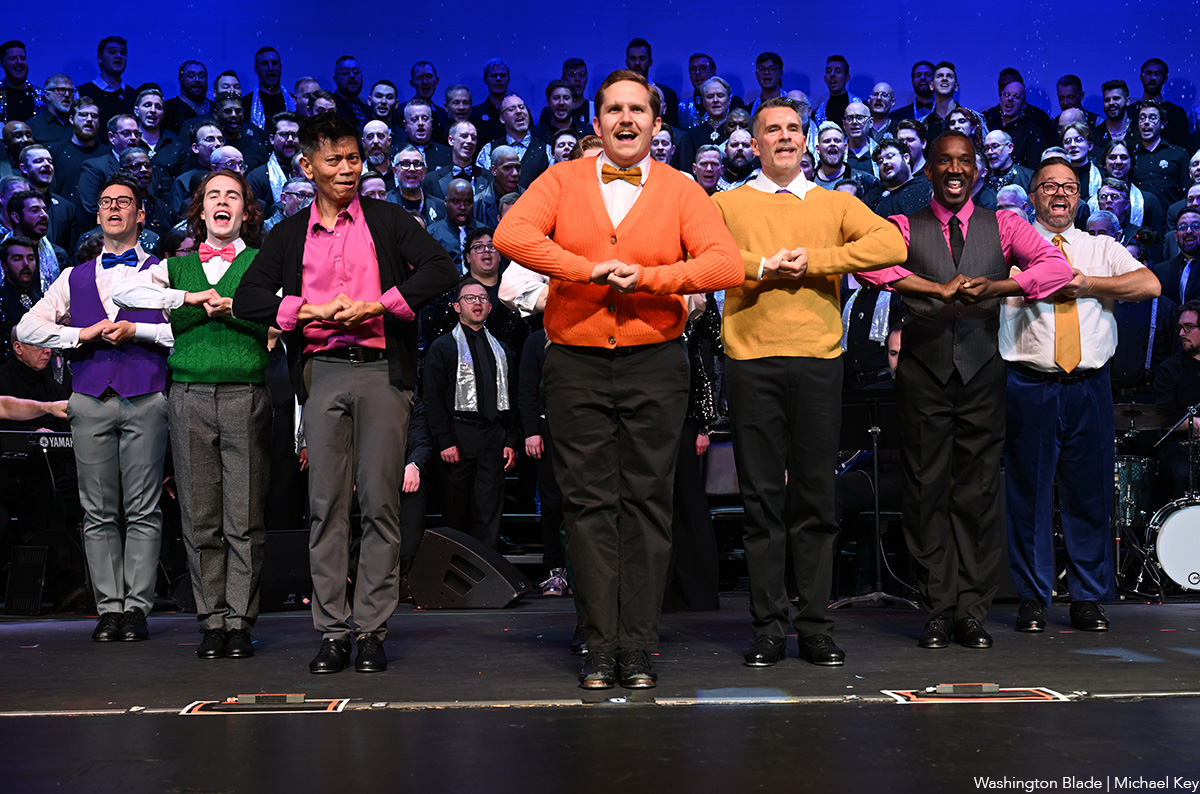

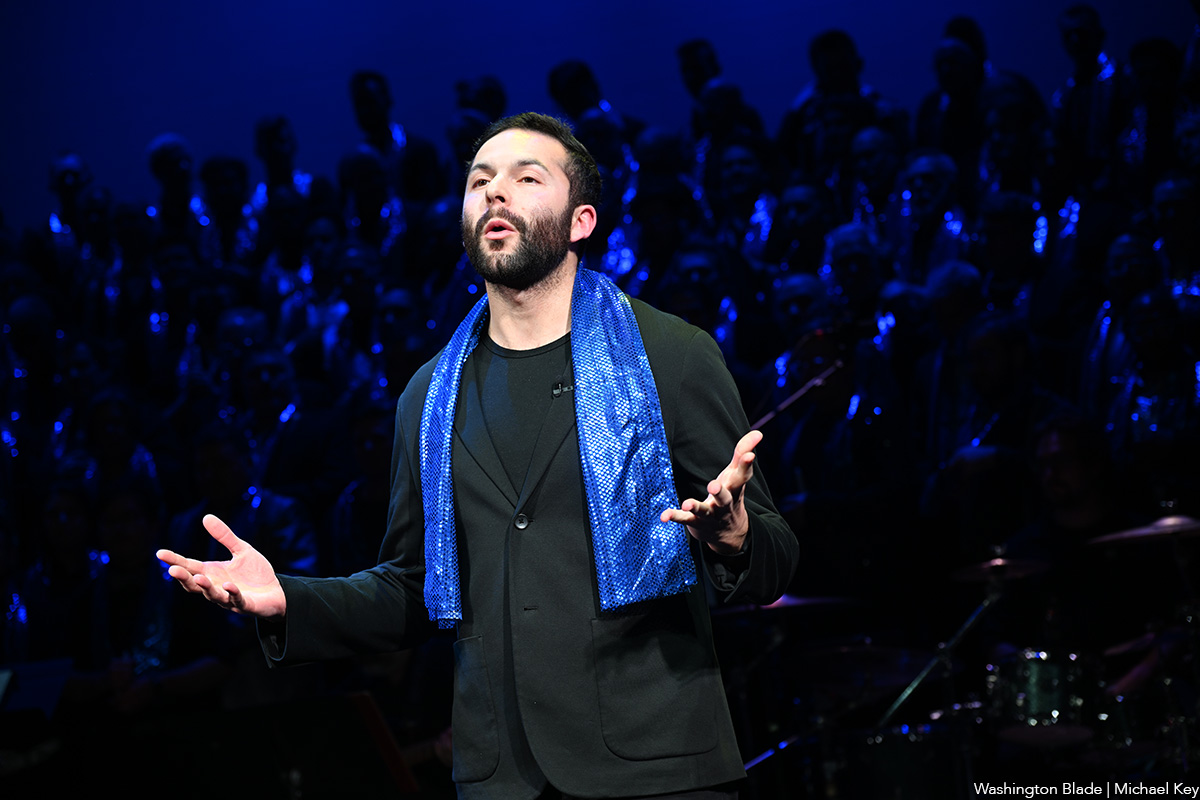
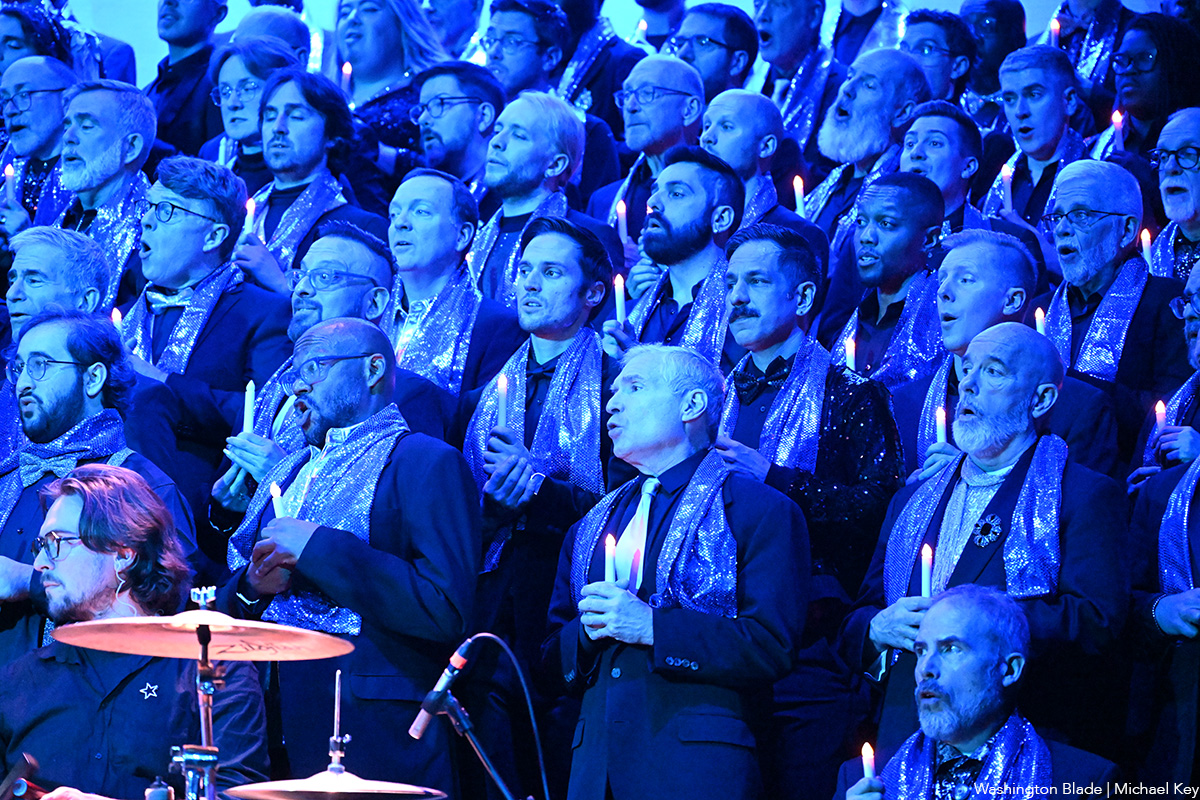
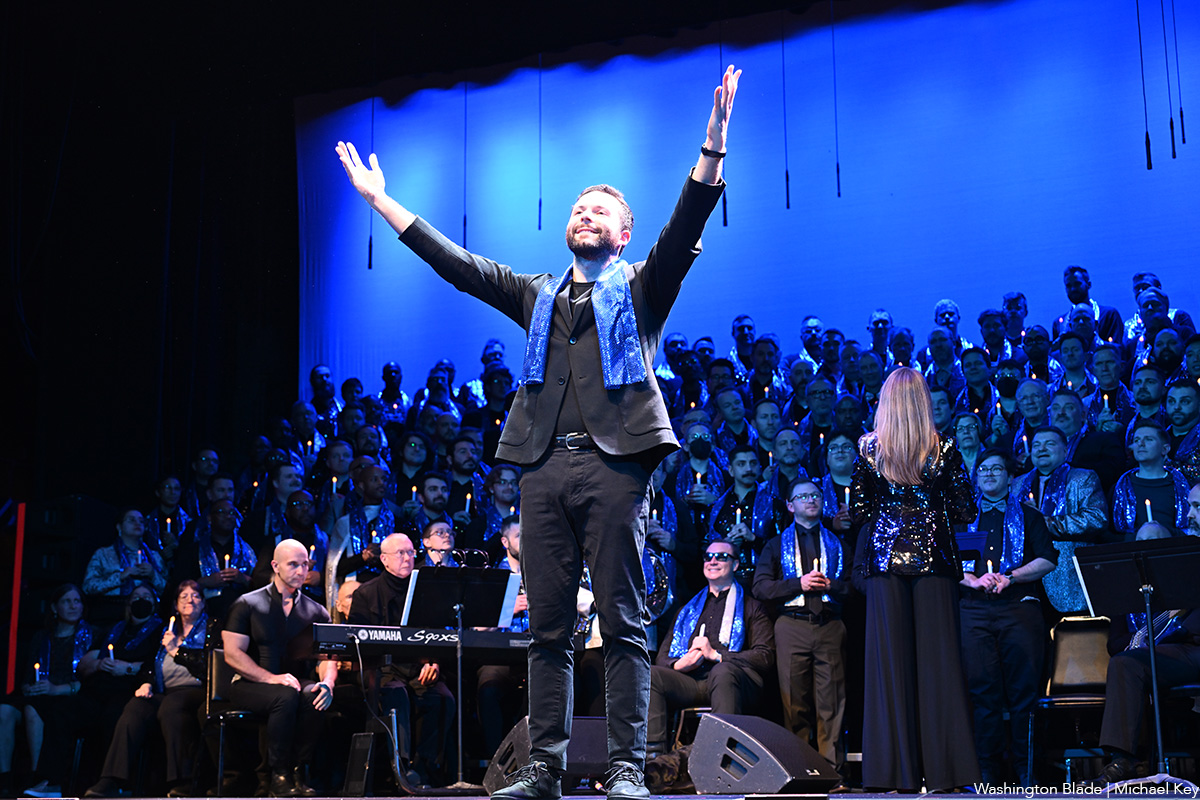


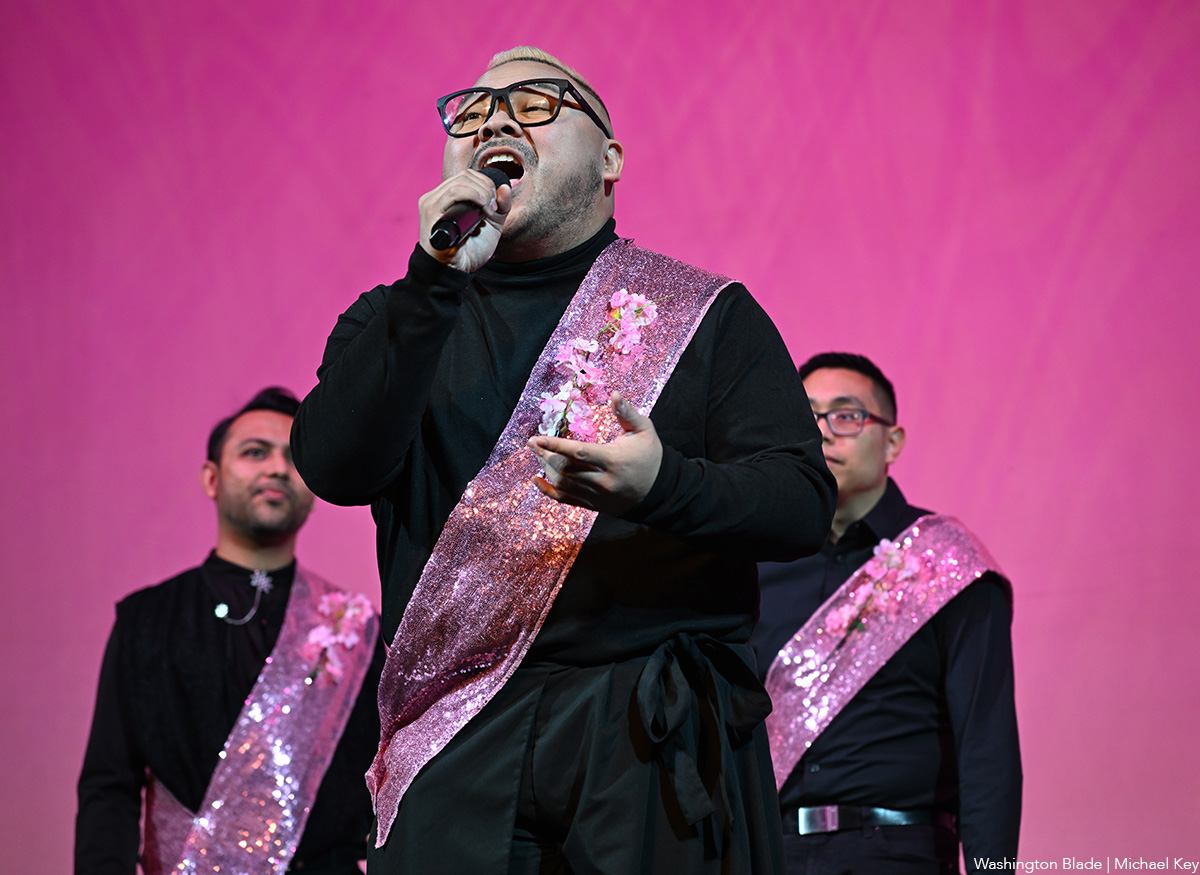

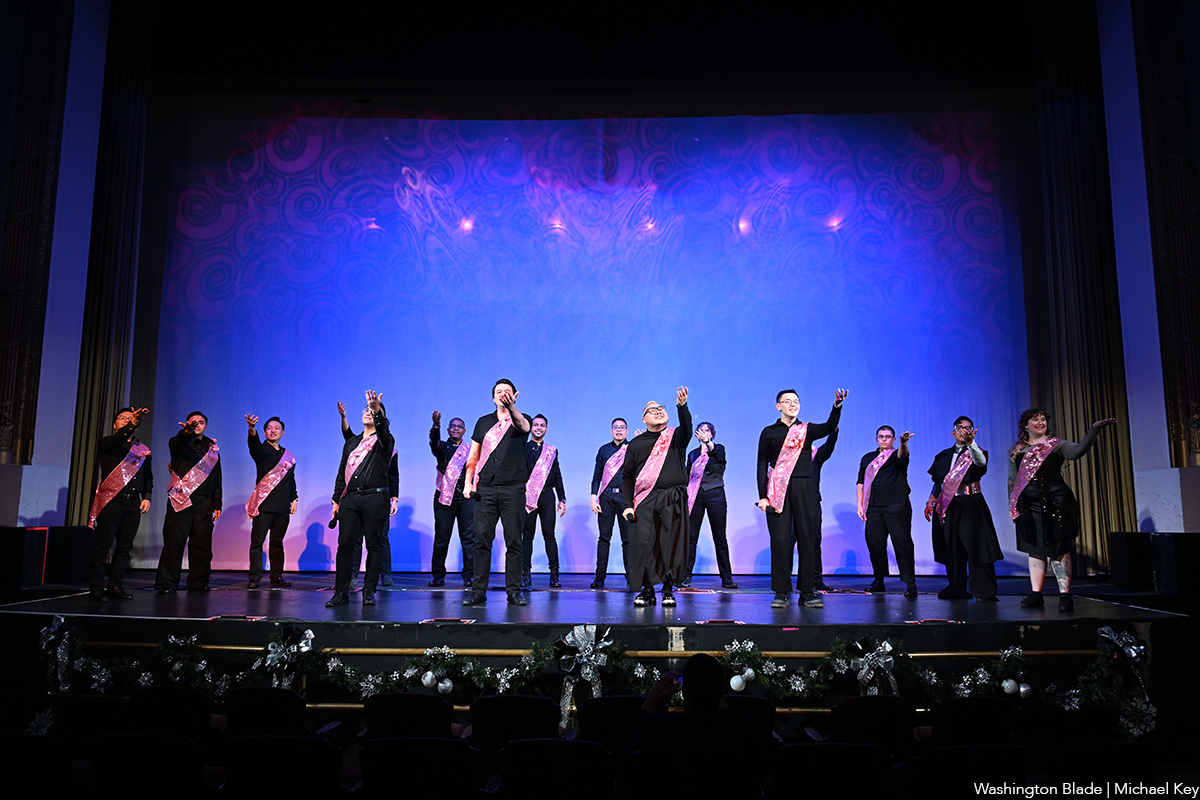
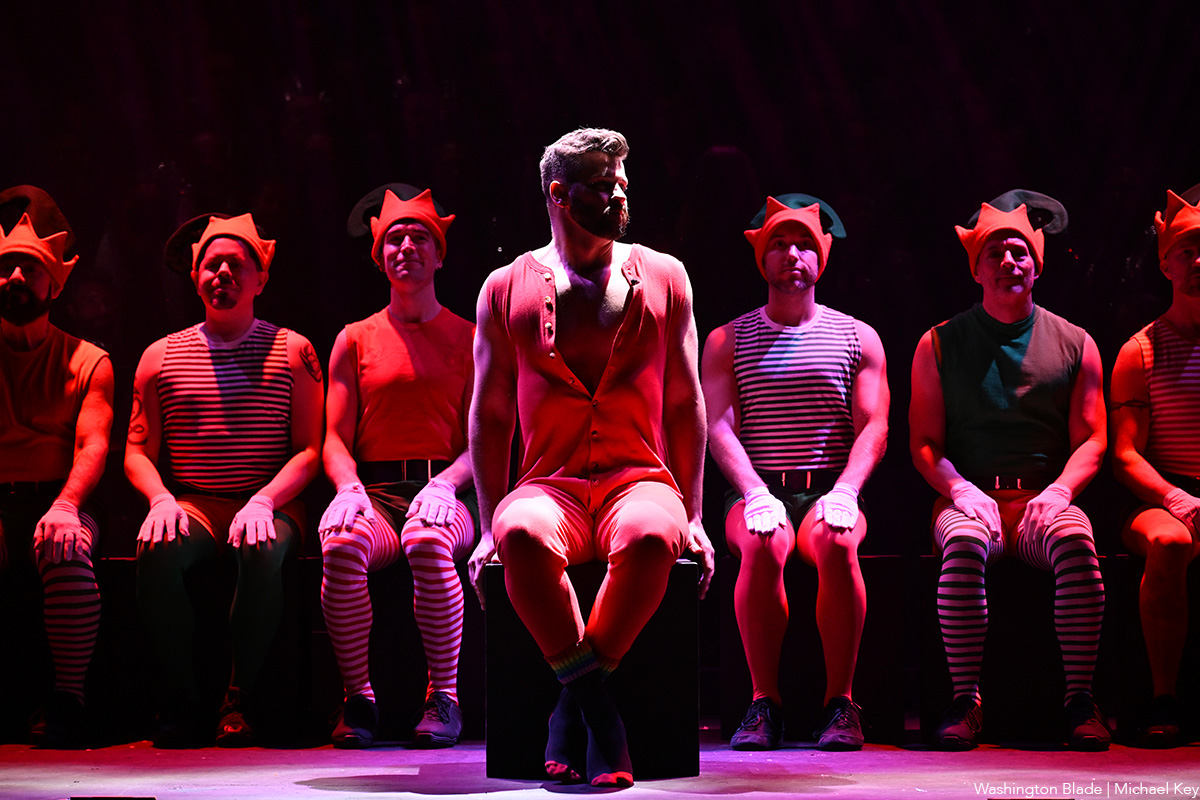

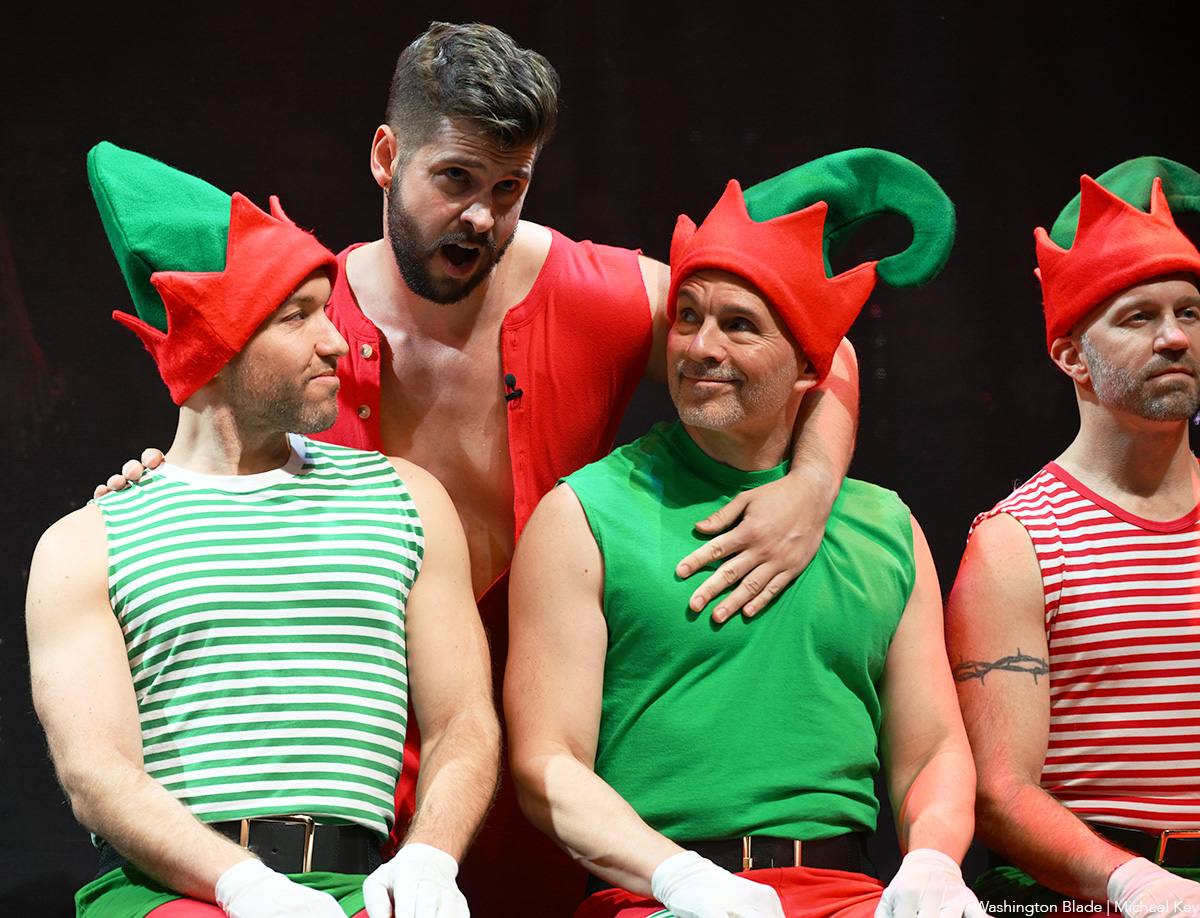

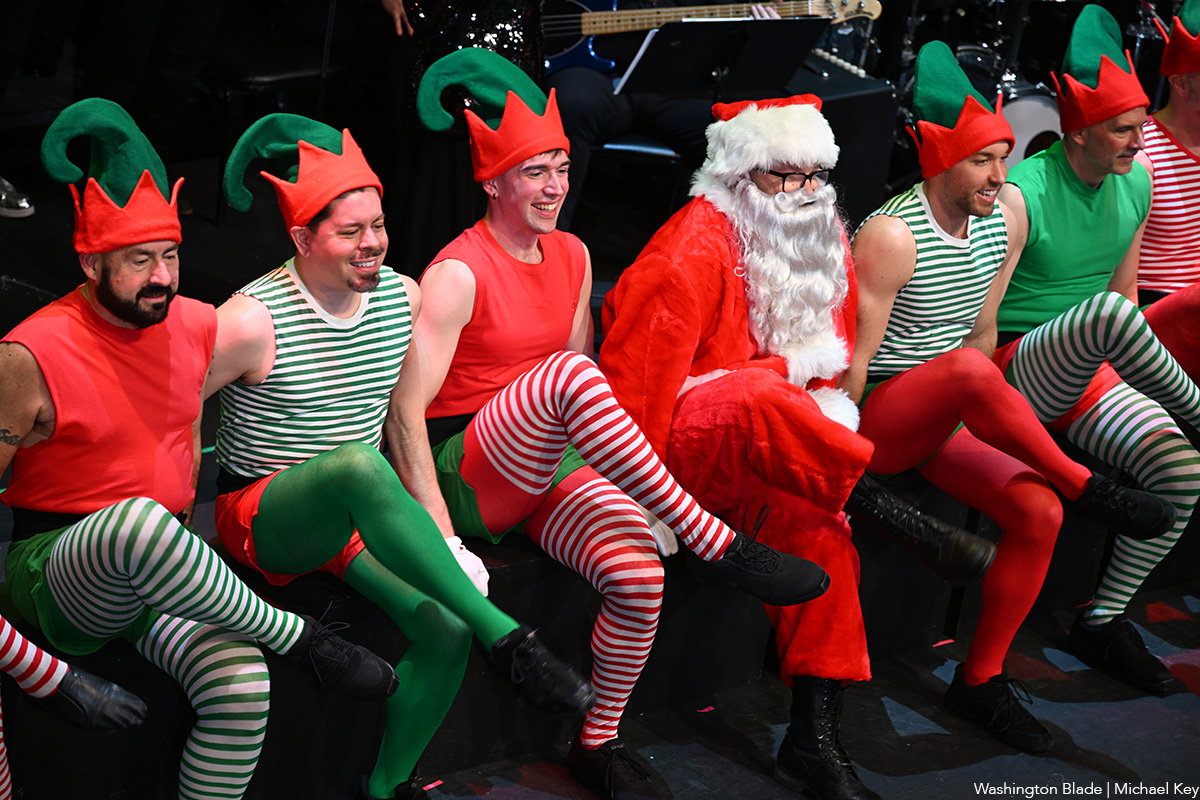


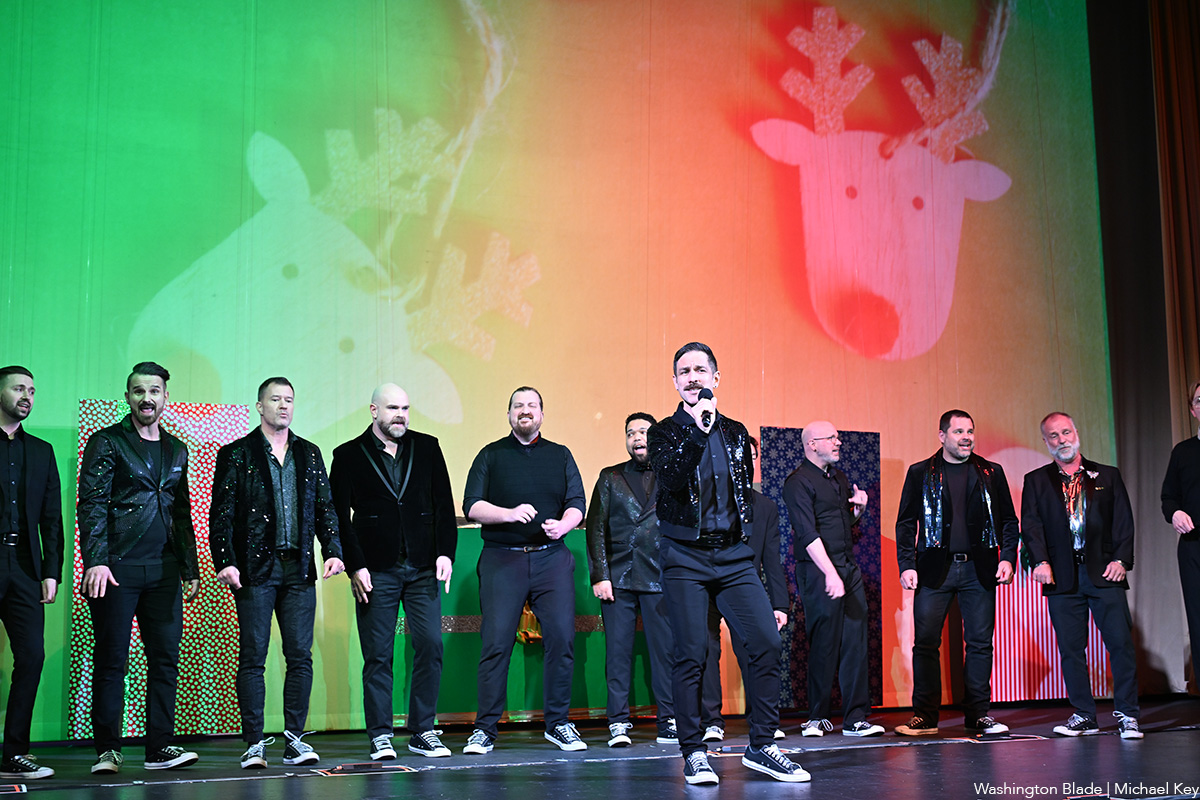
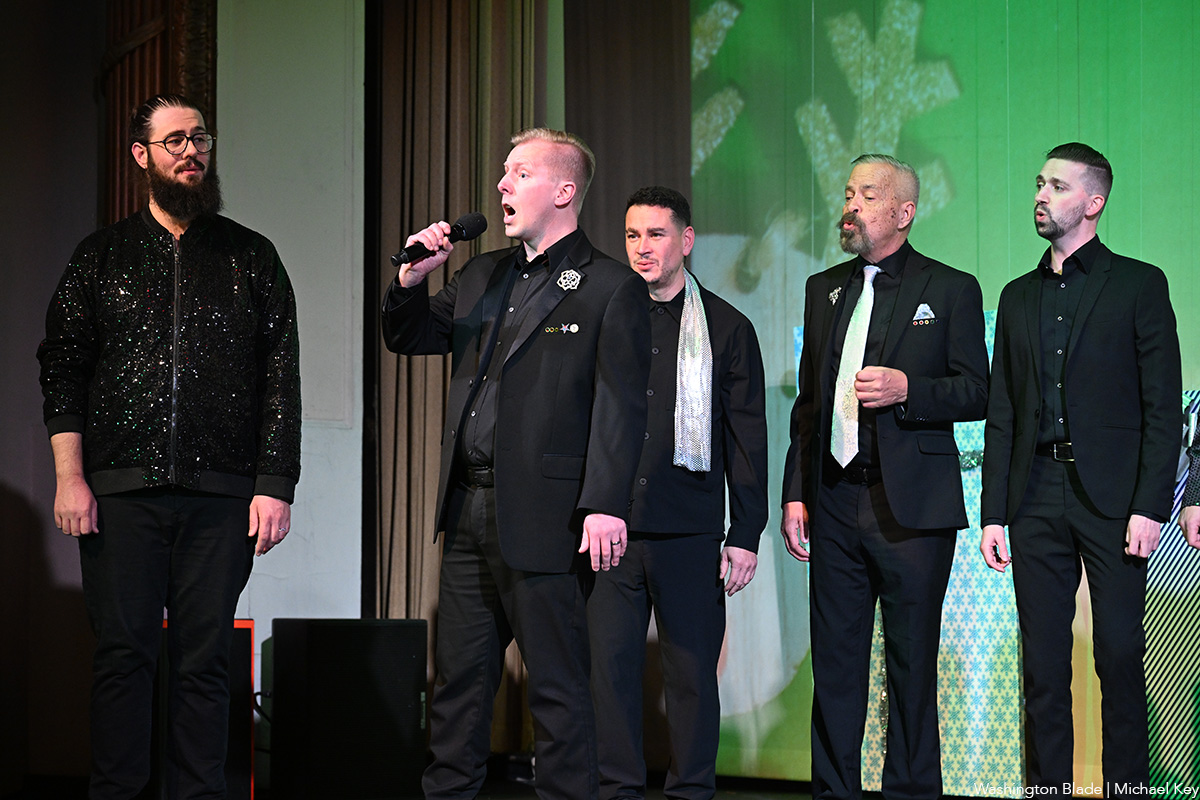
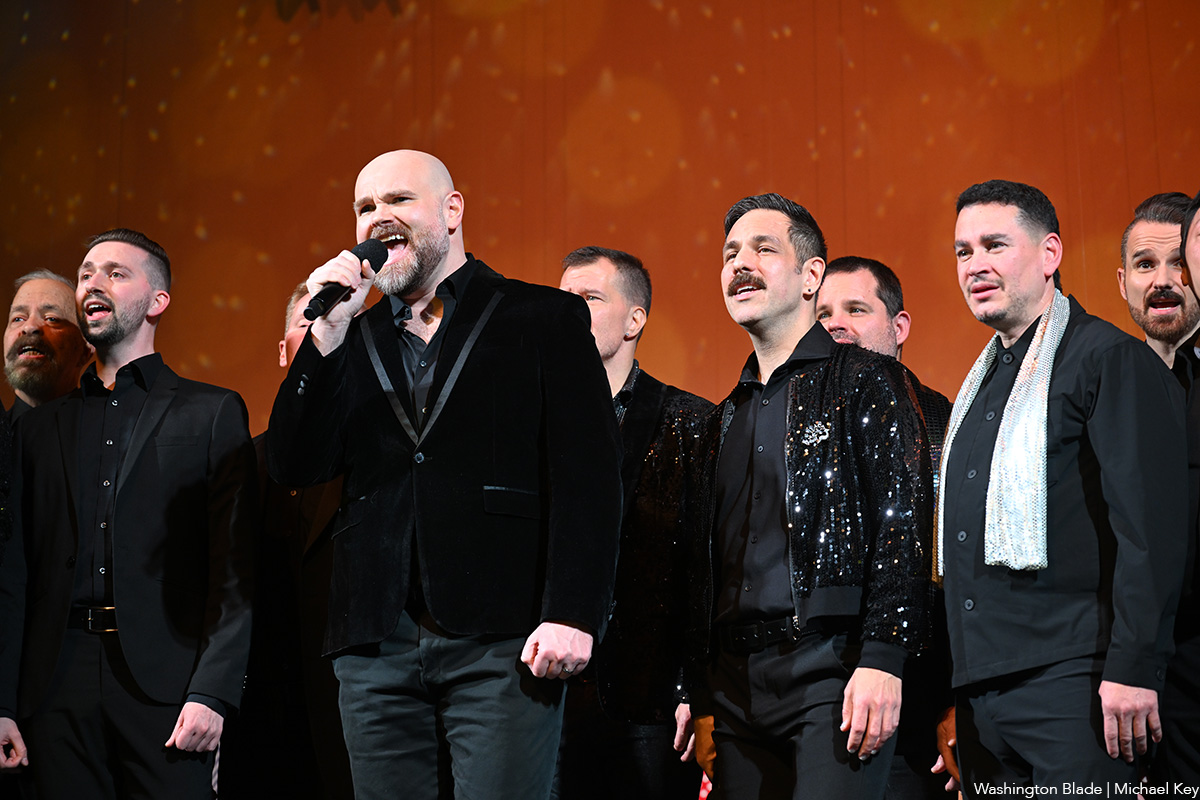
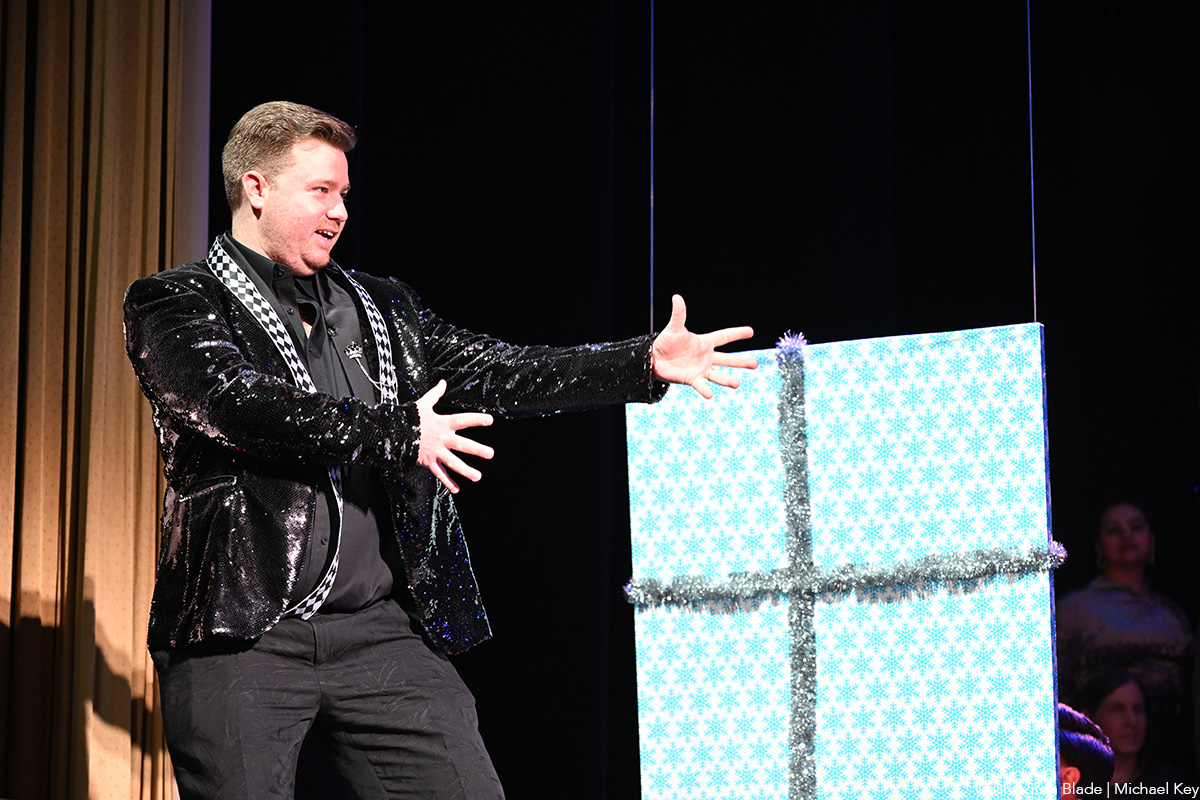
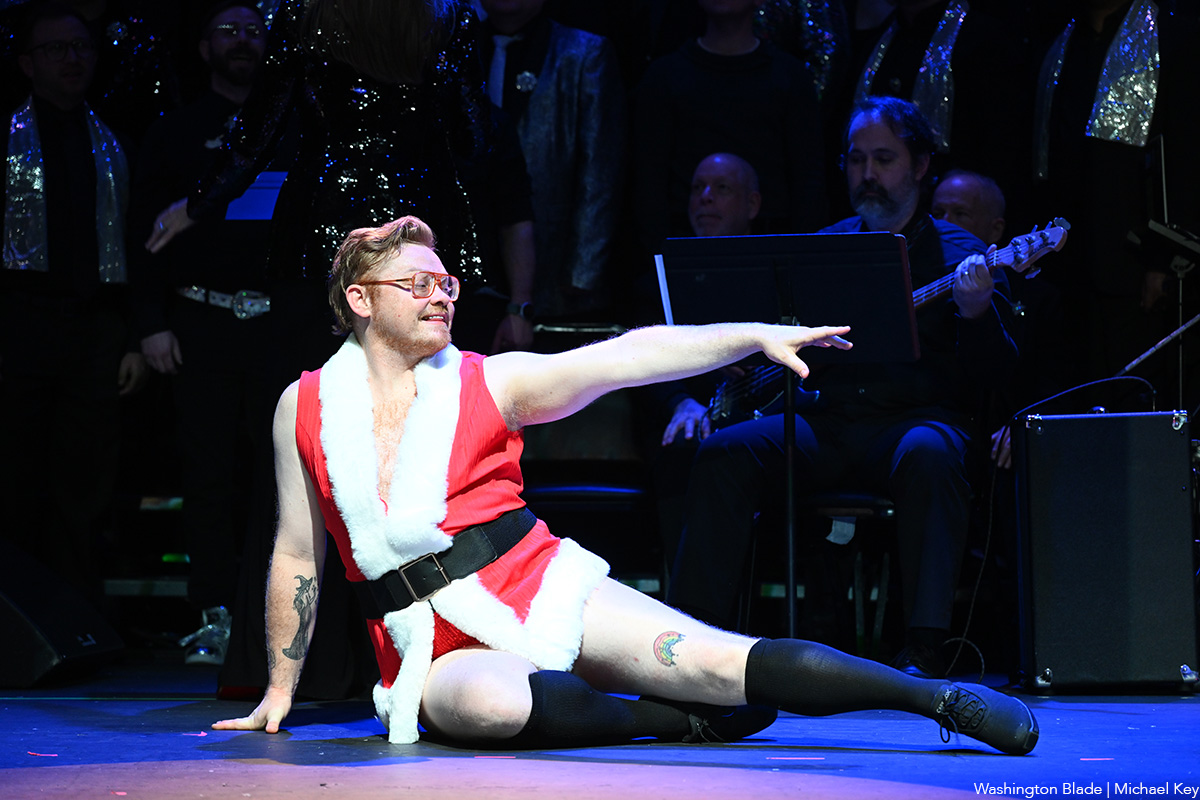
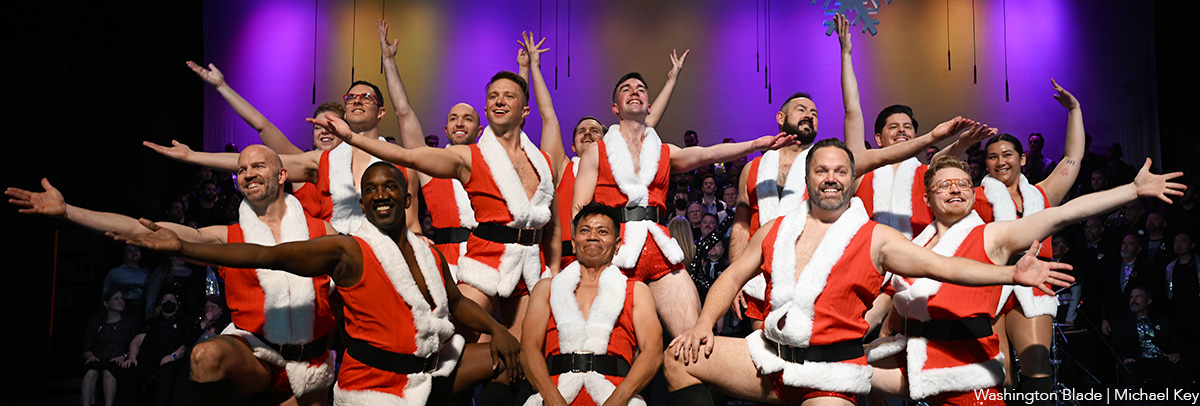
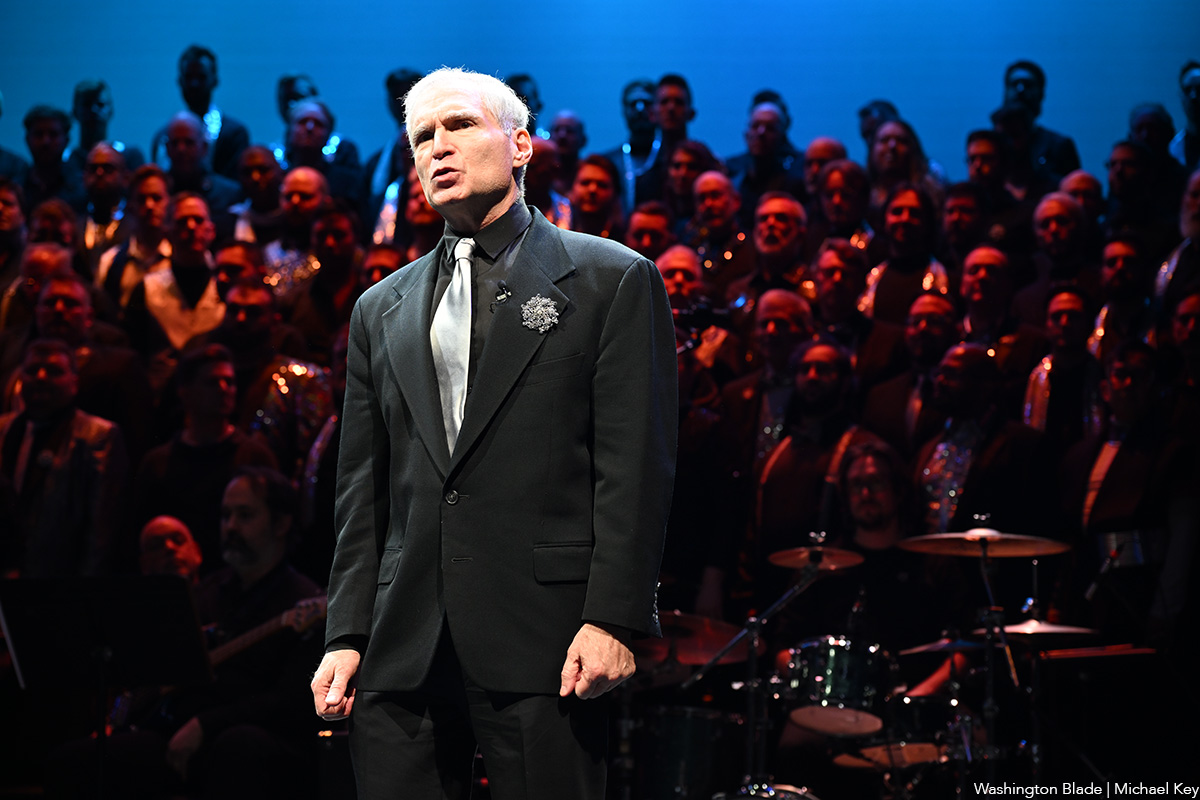


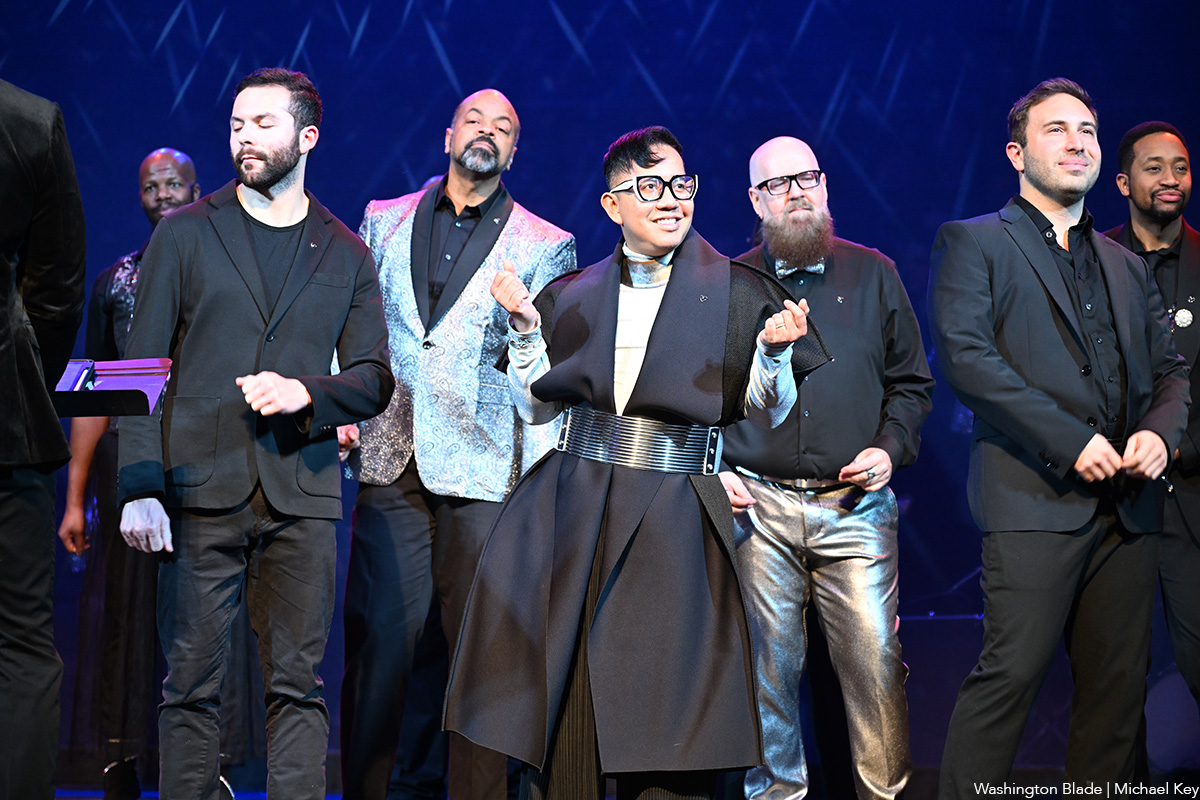


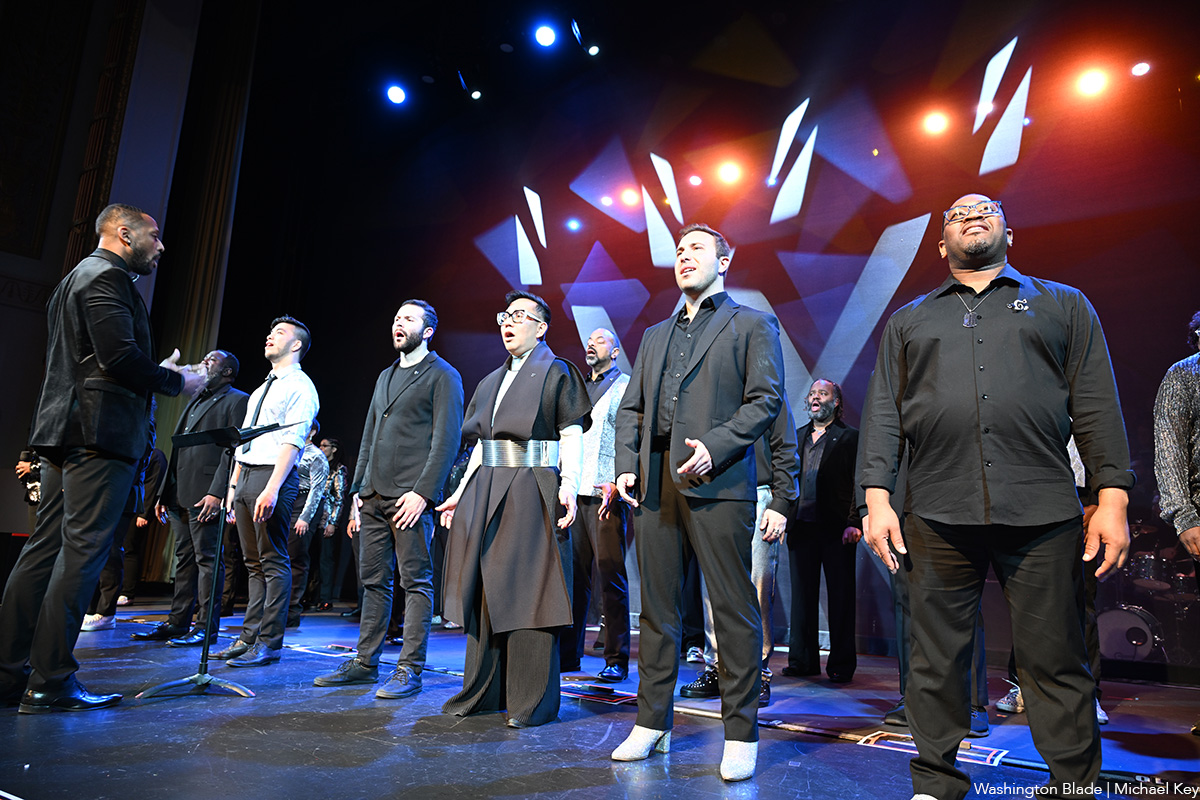


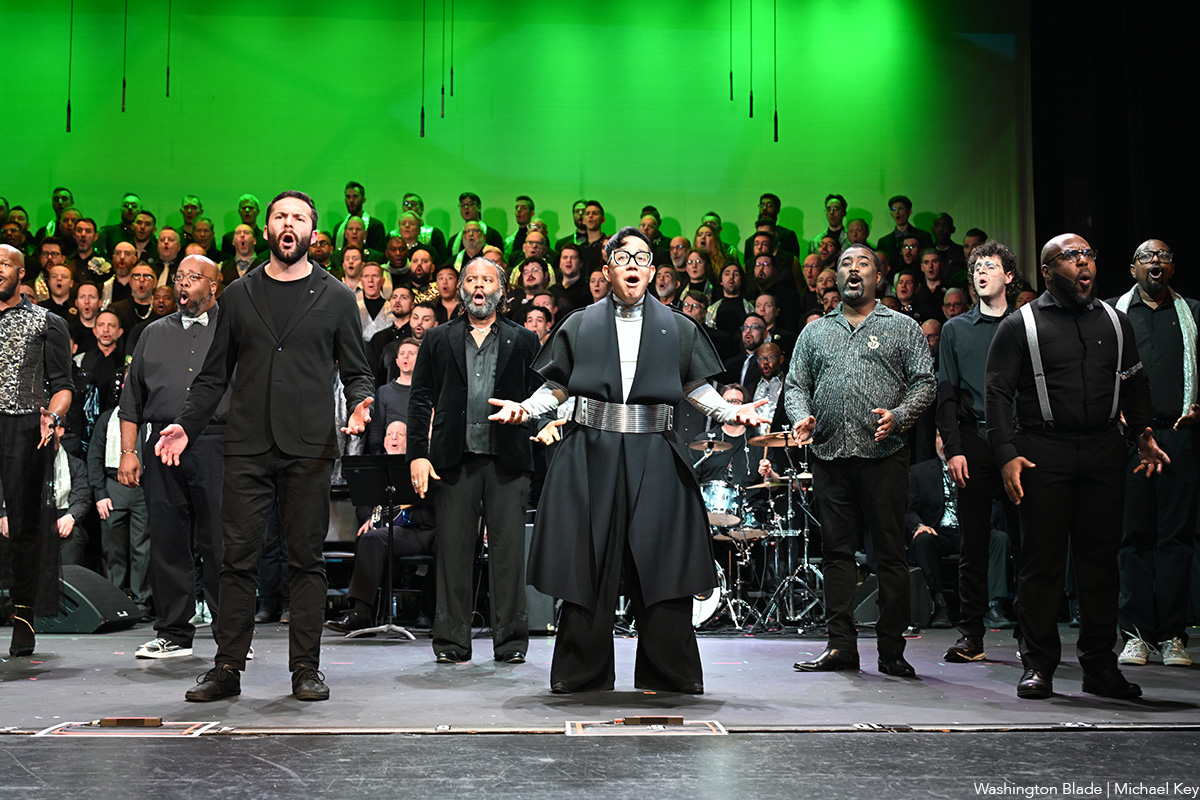
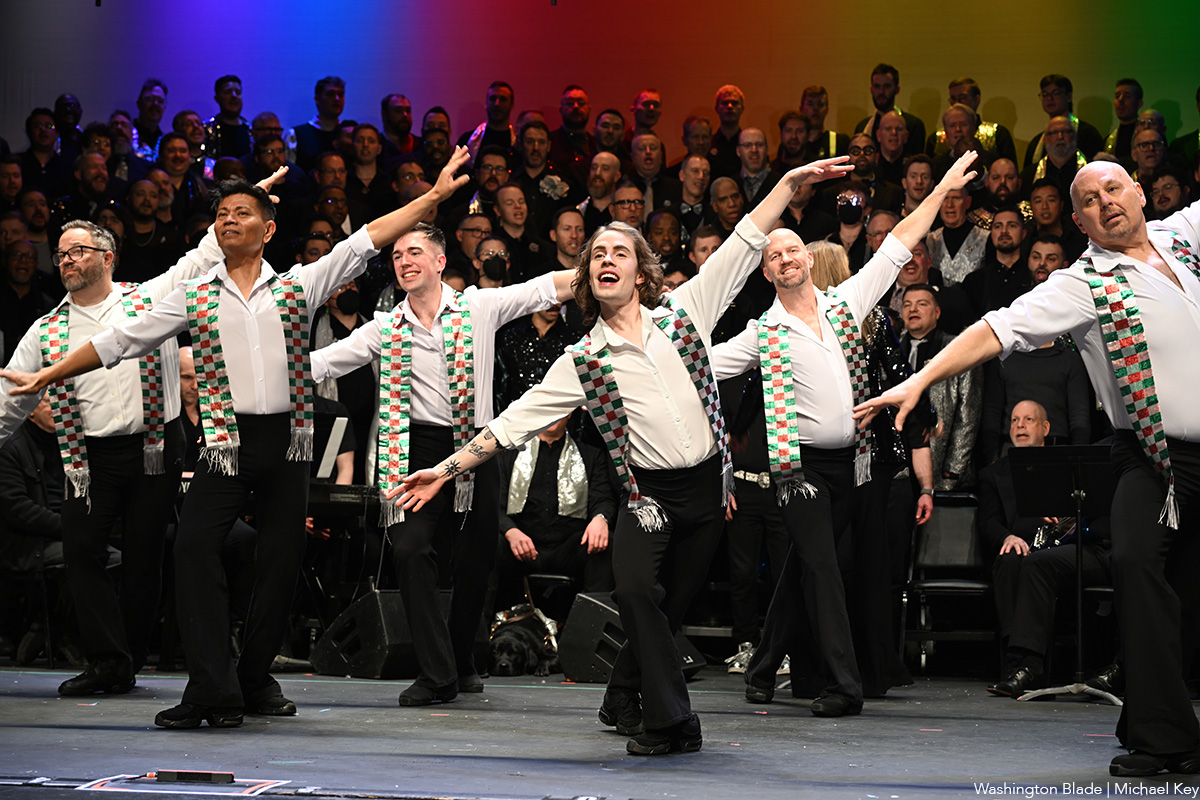

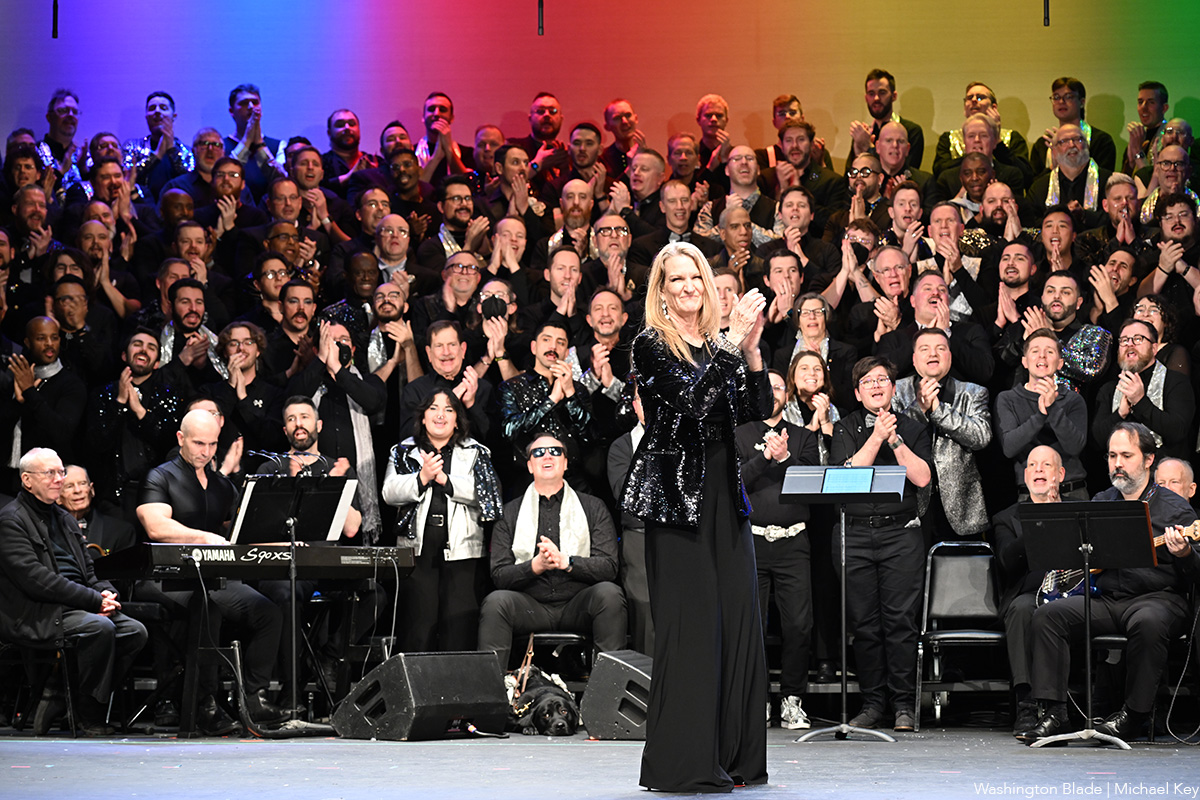
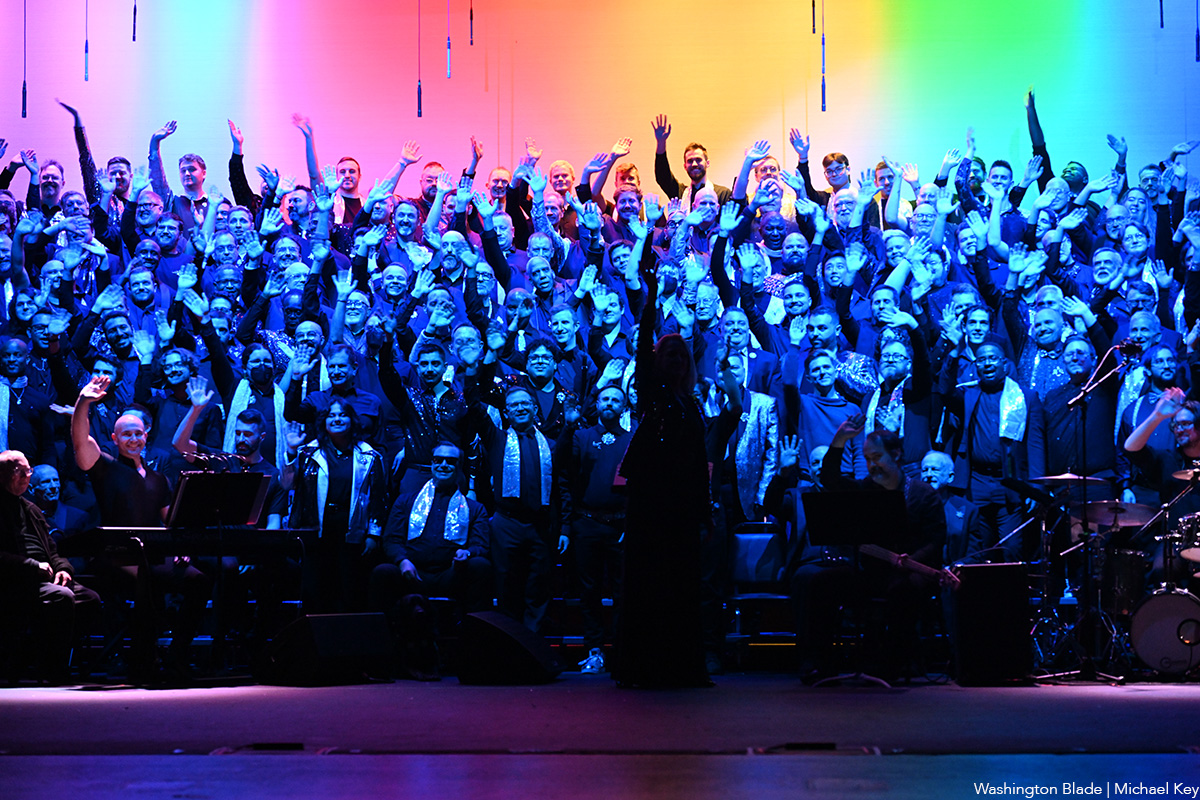

Santa will be very relieved.
You’ve taken most of the burden off him by making a list and checking it twice on his behalf. The gift-buying in your house is almost done – except for those few people who are just so darn hard to buy for. So what do you give to the person who has (almost) everything? You give them a good book, like maybe one of these.
Memoir and biography
The person who loves digging into a multi-level memoir will be happy unwrapping “Blessings and Disasters: A Story of Alabama” by Alexis Okeowo (Henry Holt). It’s a memoir about growing up Black in what was once practically ground zero for the Confederacy. It’s about inequality, it busts stereotypes, and yet it still oozes love of place. You can’t go wrong if you wrap it up with “Queen Mother: Black Nationalism, Reparations, and the Untold Story of Audley Moore” by Ashley D. Farmer (Pantheon). It’s a chunky book with a memoir with meaning and plenty of thought.
For the giftee on your list who loves to laugh, wrap up “In My Remaining Years” by Jean Grae (Flatiron Books). It’s part memoir, part comedy, a look back at the late-last-century, part how-did-you-get-to-middle-age-already? and all fun. Wrap it up with “Here We Go: Lessons for Living Fearlessly from Two Traveling Nanas” by Eleanor Hamby and Dr. Sandra Hazellip with Elisa Petrini (Viking). It’s about the adventures of two 80-something best friends who seize life by the horns – something your giftee should do, too.
If there’ll be someone at your holiday table who’s finally coming home this year, wrap up “How I Found Myself in the Midwest” by Steve Grove (Simon & Schuster). It’s the story of a Silicon Valley worker who gives up his job and moves with his family to Minnesota, which was once home to him. That was around the time the pandemic hit, George Floyd was murdered, and life in general had been thrown into chaos. How does someone reconcile what was with what is now? Pair it with “Homestand: Small Town Baseball and the Fight for the Soul of America” by Will Bardenwerper (Doubleday). It’s set in New York and but isn’t that small-town feel universal, no matter where it comes from?
Won’t the adventurer on your list be happy when they unwrap “I Live Underwater” by Max Gene Nohl (University of Wisconsin Press)? They will, when they realize that this book is by a former deep-sea diver, treasure hunter, and all-around daredevil who changed the way we look for things under water. Nohl died more than 60 years ago, but his never-before-published memoir is fresh and relevant and will be a fun read for the right person.
If celeb bios are your giftee’s thing, then look for “The Luckiest” by Kelly Cervantes (BenBella Books). It’s the Midwest-to-New-York-City story of an actress and her life, her marriage, and what she did when tragedy hit. Filled with grace, it’s a winner.
Your music lover won’t want to open any other gifts if you give “Only God Can Judge Me: The Many Lives of Tupac Shakur” by Jeff Pearlman (Mariner Books). It’s the story of the life, death, and everything in-between about this iconic performer, including the mythology that he left behind. Has it been three decades since Tupac died? It has, but your music lover never forgets. Wrap it up with “Point Blank (Quick Studies)” by Bob Dylan, text by Eddie Gorodetsky, Lucy Sante, and Jackie Hamilton (Simon & Schuster), a book of Dylan’s drawings and artwork. This is a very nice coffee-table size book that will be absolutely perfect for fans of the great singer and for folks who love art.
For the giftee who’s concerned with their fellow man, “The Lost and the Found: A True Story of Homelessness, Found Family and Second Chances” by Kevin Fagan (One Signal / Atria) may be the book to give. It’s a story of two “unhoused” people in San Francisco, one of the country’s wealthiest cities, and their struggles. There’s hope in this book, but also trouble and your giftee will love it.
For the person on your list who suffered loss this year, give “Pine Melody” by Stacey Meadows (Independently Published), a memoir of loss, grief, and healing while remembering the person gone.
LGBTQ fiction
For the mystery lover who wants something different, try “Crime Ink: Iconic,” edited by John Copenhaver and Salem West (Bywater Books), a collection of short stories inspired by “queer legends” and allies you know. Psychological thrillers, creepy crime, cozies, they’re here.
Novel lovers will want to curl up this winter with “Middle Spoon” by Alejandro Varela (Viking), a book about a man who appears to have it all, until his heart is broken and the fix for it is one he doesn’t quite understand and neither does anyone he loves.
LGBTQ studies – nonfiction
For the young man who’s struggling with issues of gender, “Before They Were Men” by Jacob Tobia (Harmony Books) might be a good gift this year. These essays on manhood in today’s world works to widen our conversations on the role politics and feminism play in understanding masculinity and how it’s time we open our minds.
If there’s someone on your gift list who had a tough growing-up (didn’t we all?), then wrap up “I’m Prancing as Fast as I Can” by Jon Kinnally (Permuted Press / Simon & Schuster). Kinnally was once an awkward kid but he grew up to be a writer for TV shows you’ll recognize. You can’t go wrong gifting a story like that. Better idea: wrap it up with “So Gay for You: Friendship, Found Family, & The Show That Started It All” by Leisha Hailey & Kate Moennig (St. Martin’s Press), a book about a little TV show that launched a BFF-ship.
Who doesn’t have a giftee who loves music? You sure do, so wrap up “The Secret Public: How Music Moved Queer Culture from the Margins to the Mainstream” by Jon Savage (Liveright). Nobody has to tell your giftee that queer folk left their mark on music, but they’ll love reading the stories in this book and knowing what they didn’t know.
The Blade may receive commissions from qualifying purchases made via this post.
Theater
Studio’s ‘Mother Play’ draws from lesbian playwright’s past
A poignant memory piece laced with sadness and wry laughs
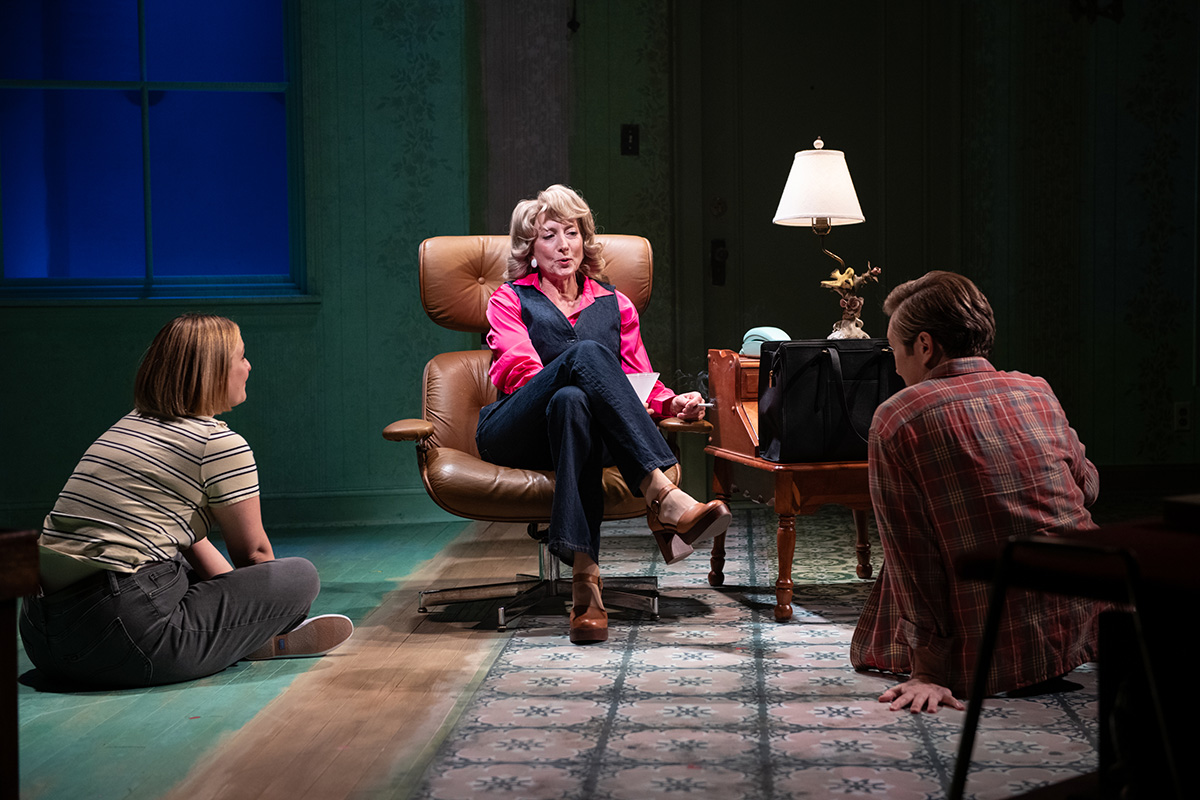
‘The Mother Play’
Through Jan. 4
Studio Theatre
1501 14th St., N.W.
$42 – $112
Studiotheatre.org
“The Mother Play” isn’t the first work by Pulitzer Prize-winning lesbian playwright Paula Vogel that draws from her past. It’s just the most recent.
Currently enjoying an extended run at Studio Theatre, “The Mother Play,” (also known as “The Mother Play: A Play in Five Evictions,” or more simply, “Mother Play”) is a 90-minute powerful and poignant memory piece laced with sadness and wry laughs.
The mother in question is Phyllis Herman (played exquisitely by Kate Eastwood Norris), a divorced government secretary bringing up two children under difficult circumstances. When we meet them it’s 1964 and the family is living in a depressing subterranean apartment adjacent to the building’s trash room.
Phyllis isn’t exactly cut out for single motherhood; an alcoholic chain-smoker with two gay offspring, Carl and Martha, both in their early teens, she seems beyond her depth.
In spite (or because of) the challenges, things are never dull in the Herman home. Phyllis is warring with landlords, drinking, or involved in some other domestic intrigue. At the same time, Carl is glued to books by authors like Jane Austen, and queer novelist Lytton Strachey, while Martha is charged with topping off mother’s drinks, not a mean feat.
Despite having an emotionally and physically withholding parent, adolescent Martha is finding her way. Fortunately, she has nurturing older brother Carl (the excellent Stanley Bahorek) who introduces her to queer classics like “The Well of Loneliness” by Radclyffe Hall, and encourages Martha to pursue lofty learning goals.
Zoe Mann’s Martha is just how you might imagine the young Vogel – bright, searching, and a tad awkward.
As the play moves through the decades, Martha becomes an increasingly confident young lesbian before sliding comfortably into early middle age. Over time, her attitude toward her mother becomes more sympathetic. It’s a convincing and pleasing performance.
Phyllis is big on appearances, mainly her own. She has good taste and a sharp eye for thrift store and Goodwill finds including Chanel or a Von Furstenberg wrap dress (which looks smashing on Eastwood Norris, by the way), crowned with the blonde wig of the moment.
Time and place figure heavily into Vogel’s play. The setting is specific: “A series of apartments in Prince George’s and Montgomery County from 1964 to the 21st century, from subbasement custodial units that would now be Section 8 housing to 3-bedroom units.”
Krit Robinson’s cunning set allows for quick costume and prop changes as decades seamlessly move from one to the next. And if by magic, projection designer Shawn Boyle periodically covers the walls with scurrying roaches, a persistent problem for these renters.
Margot Bordelon directs with sensitivity and nuance. Her take on Vogel’s tragicomedy hits all the marks.
Near the play’s end, there’s a scene sometimes referred to as “The Phyllis Ballet.” Here, mother sits onstage silently in front of her dressing table mirror. She is removed of artifice and oozes a mixture of vulnerability but not without some strength. It’s longish for a wordless scene, but Bordelon has paced it perfectly.
When Martha arranges a night of family fun with mom and now out and proud brother at Lost and Found (the legendary D.C. gay disco), the plan backfires spectacularly. Not long after, Phyllis’ desire for outside approval resurfaces tenfold, evidenced by extreme discomfort when Carl, her favorite child, becomes visibly ill with HIV/AIDS symptoms.
Other semi-autobiographical plays from the DMV native’s oeuvre include “The Baltimore Waltz,” a darkly funny, yet moving piece written in memory of her brother (Carl Vogel), who died of AIDS in 1988. The playwright additionally wrote “How I Learned to Drive,” an acclaimed play heavily inspired by her own experiences with sexual abuse as a teenager.
“The Mother Play” made its debut on Broadway in 2024, featuring Jessica Lange in the eponymous role, earning her a Tony Award nomination.
Like other real-life matriarch inspired characters (Mary Tyrone, Amanda Wingfield, Violet Weston to name a few) Phyllis Herman seems poised to join that pantheon of complicated, women.
-

 Congress3 days ago
Congress3 days agoEXCLUSIVE: George Santos speaks out on prison, Trump pardon, and more
-

 Opinions4 days ago
Opinions4 days agoThe beginning of the fall of Trump
-

 Congress5 days ago
Congress5 days agoMarkey reintroduces International Human Rights Act in Senate
-

 Egypt4 days ago
Egypt4 days agoIran, Egypt object to playing in Seattle World Cup ‘Pride Match’

